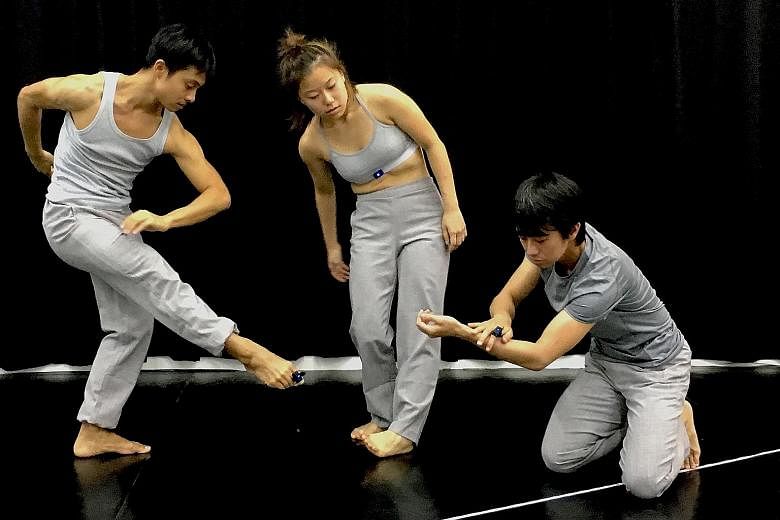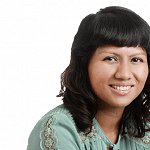The body is usually the main instrument of a dancer. But in Sounding Body, an upcoming performance by contemporary dance company Raw Moves, three dancers become musicians as they play the guqin, a Chinese stringed instrument, using only their body movements.
And the instrument happens to be invisible - at least to those who cannot read programming code.
The ambitious show, conceptualised by composer Joyce Beetuan Koh, in collaboration with instrument-system designer Felix Leuschner and artistic director of Raw Moves, Ricky Sim, will be staged at Goodman Arts Centre from May 26 to 28.
The dancers wear motion trackers on their bodies - for example, on their fingers or toes - and, depending on the action they make, they can play different notes on the guqin, control how long the note is held and "glide" from one note to another, a signature of the instrument.
"We wanted to examine whether dancers can become musicians," says Dr Koh, 47, whose music compositions have been performed by international symphony orchestras such as the BBC Symphony Orchestra.
"The quality of the sound is directly related to how the dancers move. It's no longer about the dancers moving to the music - they are creating the music. We are changing that relationship."
-
BOOK IT / SOUNDING BODY
-
WHERE: Goodman Arts Centre, 90 Goodman Road, Black Box
WHEN: May 26 to 28, 8pm
ADMISSION: $28 (go to www.soundingbody.peatix.com)
Dr Koh, vice-dean of interdisciplinary studies at the Nanyang Academy of Fine Arts, was speaking to The Straits Times at a media preview held last week at Raw Moves' studio at Goodman Arts Centre. This work is part of the Research And Development platform of the five-year-old company.
The show is structured in seven parts - a reference to the seven strings of the guqin. Five of the segments draw reference from five classic guqin melodies, which have poetic titles such as Water Immortal and Drunken Disorder. The other two parts are the epilogue and prologue of the piece.
While Dr Koh's initial concept was to have dancers dancing on the guqin's strings to produce the sounds, she decided to do away with the physical instrument so that they have more freedom to move.
Leuschner, 38, who is also a composer and percussionist, put in five weeks of non-stop coding to create the virtual instrument.
The result is a complex mind map-like collection of code, which dictates what happens when a dancer raises his arm to a particular height or turns in a certain way.
The system was individually created for dancers Matthew Goh, 23; Melyn Chow, 22; and Kong Wei Jie, 34. This is the first time both Dr Koh and Leuschner are working with dancers to produce music in this way.
"They never do this," says Leuschner, flicking his hand jerkily, demonstrating how a non-dancer might use the motion tracker.
Sweeping his arm artfully, he says: "They do this."
Sounding Body from RAW Moves on Vimeo.
The dancers spent two weeks training their ears to familiarise themselves with the guqin's unique sounds and to recognise musical motifs. This means that, for the show, they are actually creating the music live, inviting appreciation not just on a visual level, but also aurally.
Sim, 46, acknowledges that the project has not been easy, especially in making it equally a movement as well as a musical piece. "Neither takes precedence. I told the dancers, you need to believe your body is made up of both. It's the yin and the yang effect to create the maximum impact on stage."
Despite all the hard work that goes into Sounding Body, the final piece looks deceptively simple and minimalistic, as the team discarded all unnecessary movements or sound that did not add to the piece.
At the end of the show, members of the audience will be able to try using the motion tracker, which requires steady hands and a lot of focus to create a clean sound.
They will also be able to look at photos and documentation of the entire eight-week process that resulted in the final work.
Sim says: "What we hope to present is the intricacy behind the simplicity of the work."


